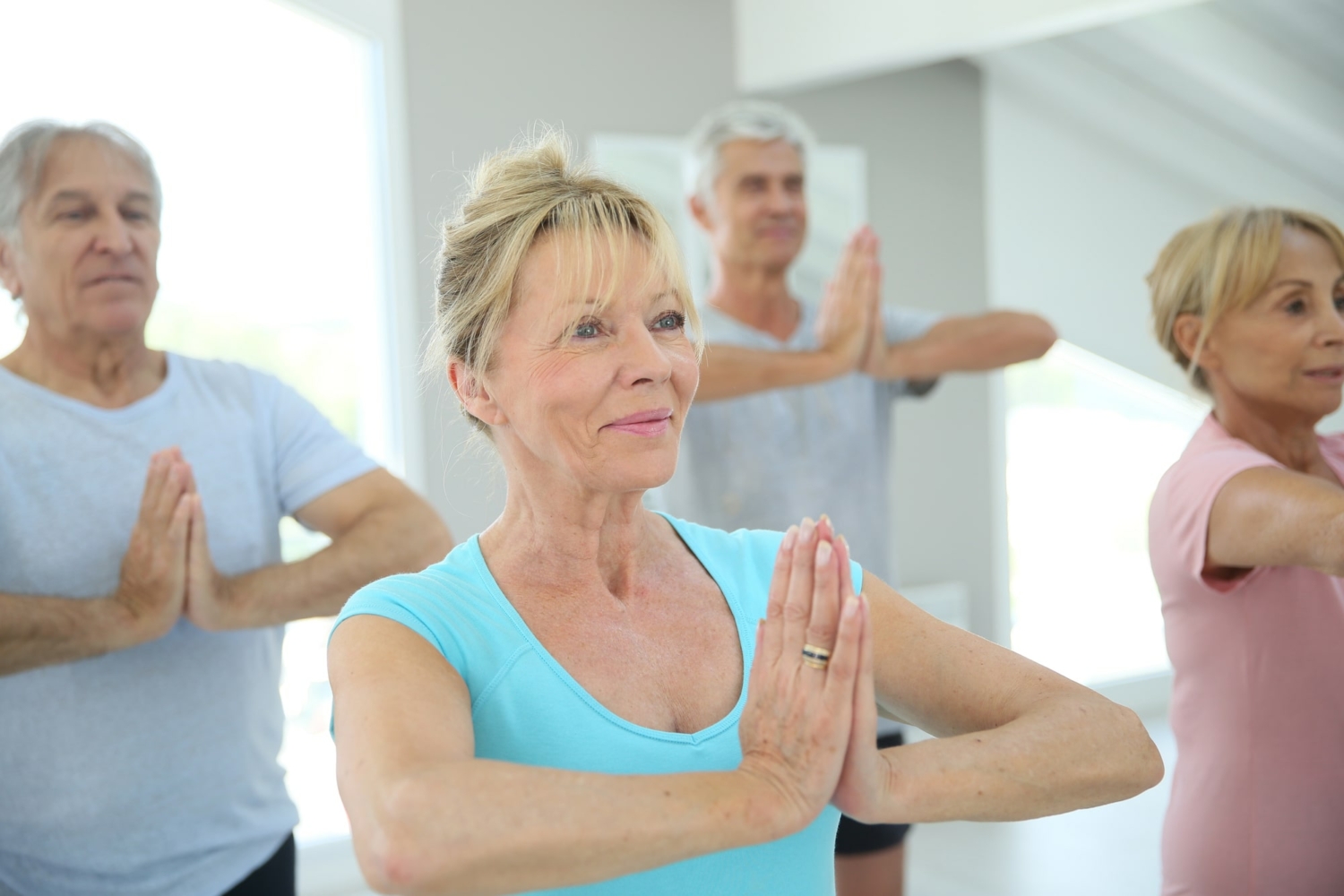Benefits of Yoga for Older Adults
Looking for new ways to get active? Yoga might be the perfect addition to your daily routine. There are many benefits of yoga for older adults – and not just physical benefits. You’ll get mental and emotional benefits too.
Keep scrolling to get a glimpse of them all, along with more tips to get the most out of your practice.
Physical Benefits of Yoga for Older Adults
Maintaining our physical health is important at every age, but it’s more important than ever in our 50s and beyond. And yoga offers a wealth of physical benefits:
Flexibility: Regular yoga practice gently stretches your muscles and joints, improving your range of motion. This increased flexibility can make everyday tasks like bending, lifting, and reaching easier.
Balance: Many yoga poses cultivate balance, which is crucial for preventing falls. Plus, improved balance can enhance your performance in other physical activities.
Strength: Yoga isn’t just about stretching; it’s also about strengthening. Many poses engage multiple muscle groups and build functional strength that supports independence and active living.
Mental Benefits of Yoga for Older Adults
Yoga is about connecting the mind and body. You’ll focus on your breathing, clear your thoughts, and be in awe of what your body can do. The connection between your mind and body has powerful implications for mental health, including
Stress Relief: Breathe in and breathe out. Yoga encourages mindful breathing and present-moment awareness. And when you’re in the moment, you can greatly reduce anxiety and stress.
Better Sleep: We all want better sleep, and yoga can help us get it! Yoga helps you relax and practice mindfulness, leading to better sleep patterns. The more you practice yoga, the more likely you are to wake up feeling refreshed and energized.
Mood Enhancement: Regular yoga practice can boost your mood and overall sense of well-being. That’s thanks to the meditative aspect of yoga. It promotes mental clarity and calmness and provides a peaceful respite from life’s worries.
Yoga and Chronic Conditions
Since yoga has both physical and mental benefits, it may help ease the symptoms of some chronic conditions too.
Arthritis: Arthritis pain can be debilitating, but yoga may help manage your symptoms. The slow, controlled movements can increase your flexibility and range of motion, which can reduce joint stiffness. In fact, some yoga poses specifically target arthritic joints and strengthen them over time. The combination of stretching and strengthening can significantly alleviate arthritis-induced discomfort and make your daily tasks more manageable.
High Blood Pressure: Yoga’s focus on breath control can have a calming effect on the nervous system, leading to a lowered heart rate and blood pressure. Certain yoga poses can also improve circulation and reduce stress levels, both of which are beneficial for maintaining healthy blood pressure levels.
Diabetes: Maintaining regular physical activity is crucial for managing diabetes, and yoga can be an excellent choice. The physical postures and mindful breathing can enhance insulin sensitivity and aid in better blood sugar management.
Remember, it’s important to consult with your healthcare provider before starting a new exercise regimen, especially if you have chronic health conditions.
Yoga Modifications
One of the best things about yoga is its adaptability. No matter your fitness level or age, there are ways to modify yoga to suit your needs:
Chair Yoga: For those with mobility issues or balance concerns, chair yoga offers a seated alternative that still provides many of the benefits of traditional yoga.
Use of Props: Tools like blocks, straps, and bolsters can make poses more accessible, allowing you to experience the benefits without strain.
Social Aspect of Yoga
Yoga isn’t just about the poses though; it’s also about the community. When you join a yoga class, you have the opportunity to build relationships and engage in meaningful conversations. You’ll gain self-confidence too, which tends to spill over into your social well-being. Before you know it, you’ll be heading to a post-yoga lunch with your new friends from class.
Safety Tips for Seniors Practicing Yoga
Practicing yoga is a journey of self-discovery and wellness, but safety should always be a priority. Keep in mind that yoga is a personal practice, not a competitive sport… and as such, it requires careful attention to your body’s signals and needs. Prioritizing safety ensures your practice remains beneficial and enjoyable and doesn’t cause injury.
Listen to Your Body: Never push beyond your comfort zone. Yoga is about harmony, not competition.
Have the Right Equipment: A non-slip mat, comfortable clothing, and any necessary props can make your practice safer and more enjoyable.
Consult a Healthcare Provider: It’s always wise to consult with your healthcare provider before starting a new yoga routine.
Getting Started with Yoga at Roland Park Place
Ready to embark on your yoga journey? Roland Park Place offers fitness classes designed specifically for active adults. We cater to all fitness levels, from beginners to seasoned yogis. We hope to see you on the mat soon!
Contact us for a tour of our community, and learn more about what makes us a top senior living community in Maryland!




